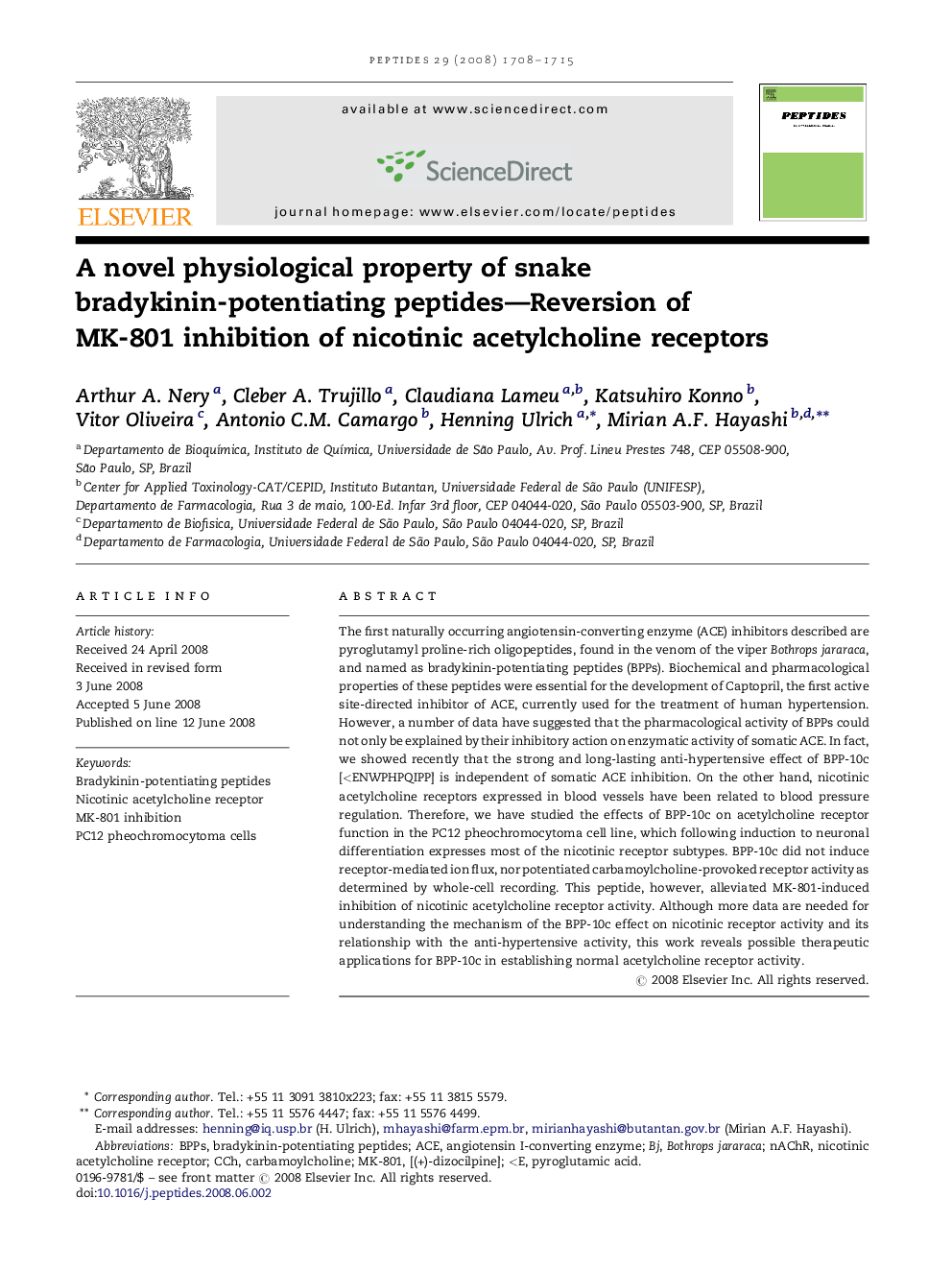| Article ID | Journal | Published Year | Pages | File Type |
|---|---|---|---|---|
| 2007361 | Peptides | 2008 | 8 Pages |
Abstract
The first naturally occurring angiotensin-converting enzyme (ACE) inhibitors described are pyroglutamyl proline-rich oligopeptides, found in the venom of the viper Bothrops jararaca, and named as bradykinin-potentiating peptides (BPPs). Biochemical and pharmacological properties of these peptides were essential for the development of Captopril, the first active site-directed inhibitor of ACE, currently used for the treatment of human hypertension. However, a number of data have suggested that the pharmacological activity of BPPs could not only be explained by their inhibitory action on enzymatic activity of somatic ACE. In fact, we showed recently that the strong and long-lasting anti-hypertensive effect of BPP-10c [
Related Topics
Life Sciences
Biochemistry, Genetics and Molecular Biology
Biochemistry
Authors
Arthur A. Nery, Cleber A. Trujillo, Claudiana Lameu, Katsuhiro Konno, Vitor Oliveira, Antonio C.M. Camargo, Henning Ulrich, Mirian A.F. Hayashi,
